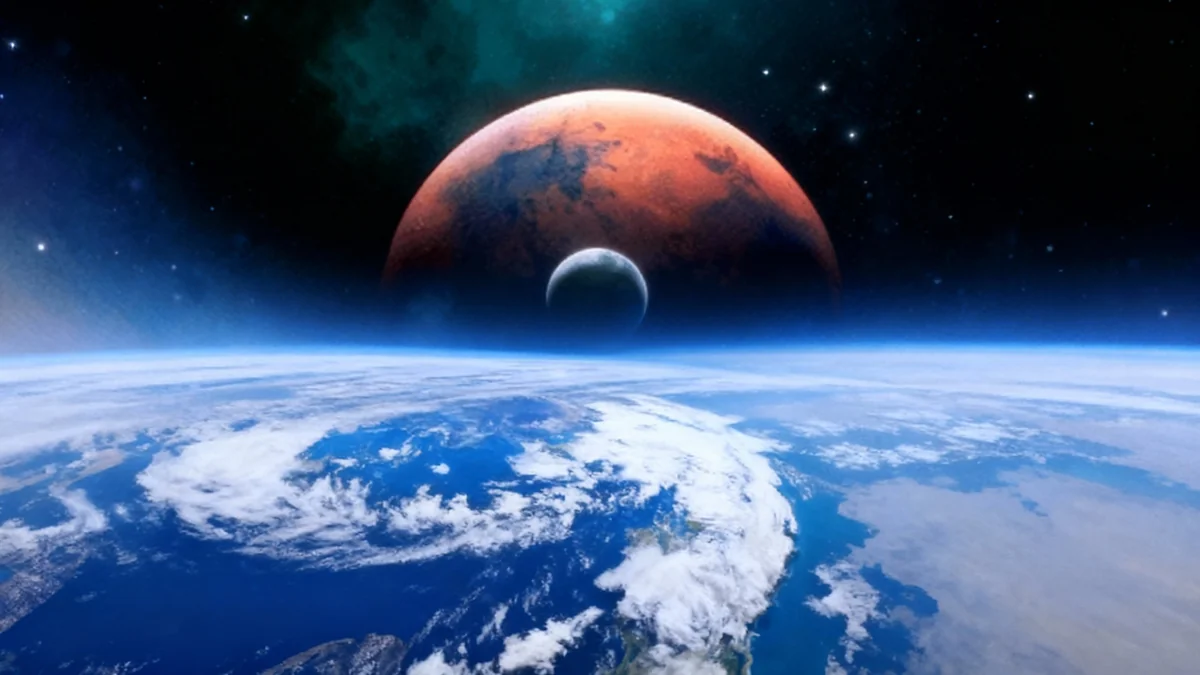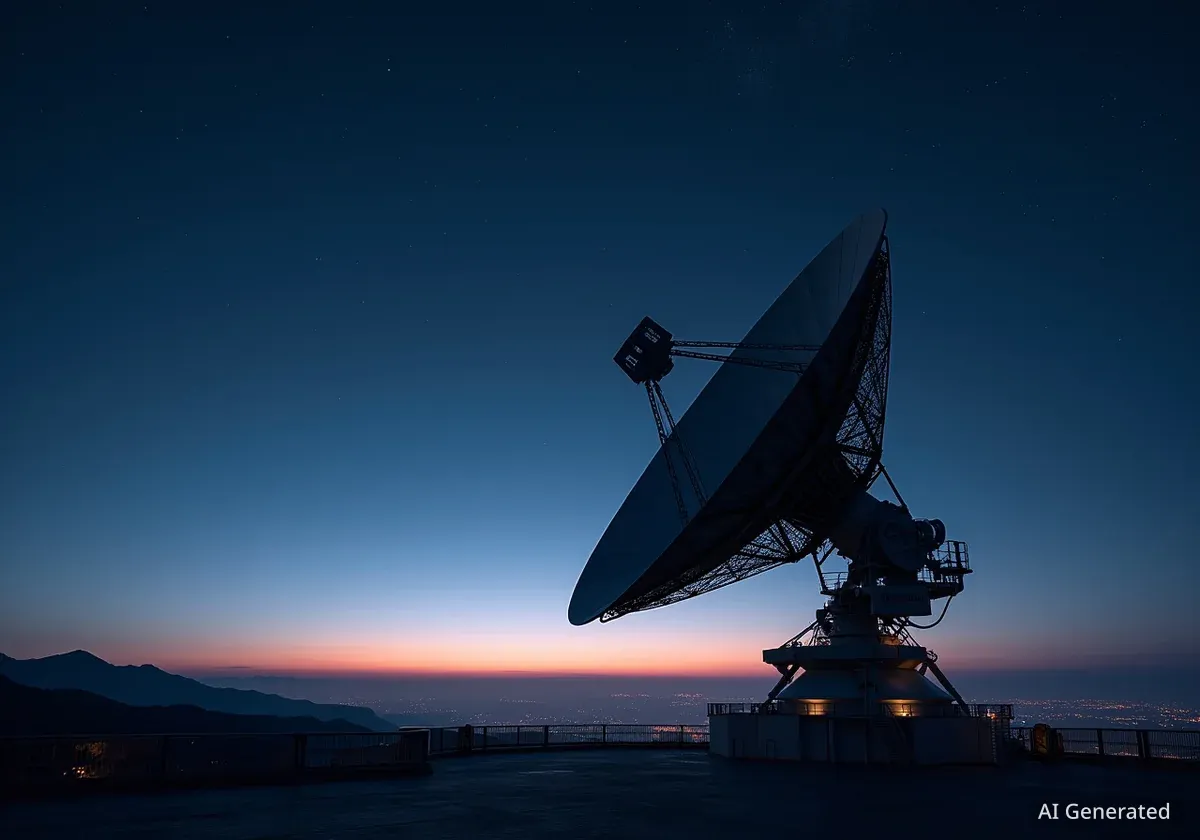The United States finds itself at a pivotal moment in space exploration, with its long-held dominance facing a significant challenge from China's rapidly advancing ambitions. Once heralded as the dawn of a new 'Golden Age' in space, the vision for American leadership is now clouded by budget uncertainties, a shifting political landscape, and the departure of key talent from its premier space agency.
While the U.S. prepares for a historic mission to circle the Moon, experts warn that without a clear and sustained national commitment, America risks ceding its preeminent position in the cosmos for the first time in over half a century.
Key Takeaways
- The U.S. vision for a new 'Golden Age' of space exploration is threatened by proposed NASA budget cuts and talent drain.
- China is on a trajectory to potentially land astronauts on the Moon ahead of the United States, posing a direct challenge to American leadership.
- The upcoming Artemis II mission in 2026 is a critical opportunity for the U.S. to regain momentum in the modern space race.
- Experts and lawmakers are calling for a stronger mandate and budget for NASA to ensure a lunar return by 2028 and a Mars landing by the mid-2030s.
A Vision Under Strain
For years, the aerospace community has buzzed with the promise of a new era. The development of advanced launch vehicles and private space stations fueled a narrative of unprecedented progress. This optimism was bolstered by national goals to plant the American flag on Mars.
However, that momentum has stalled. The prospect of returning to the Moon by the end of this decade and sending humans to Mars in the 2030s has been cast into doubt. This uncertainty is largely fueled by proposed major reductions in NASA's funding, including a potential 47% cut to its science budget.
Compounding the financial pressures is a brain drain from the storied agency, as many of its most experienced minds are choosing to leave. These internal challenges create a precarious environment for long-term, ambitious projects that require decades of sustained focus and investment.
The Moon to Mars Program
NASA's Moon to Mars Program was established to create a streamlined framework for human space exploration. The goal is to integrate efforts across human spaceflight, science, technology, and commercial partnerships to create a sustainable presence on the Moon as a stepping stone for future missions to Mars.
The Rise of a New Space Power
While the U.S. program faces headwinds, China's space ambitions are accelerating. For years, the idea of China surpassing the U.S. in space was considered a distant possibility. That is no longer the case.
The threat is now seen as imminent, with some experts predicting China could land astronauts on the lunar surface before the U.S. makes its return. Former NASA Administrator Jim Bridenstine has issued a stark warning on the matter.
"Unless something changes, it is highly unlikely the U.S. will beat China’s projected timeline to the moon’s surface." – Jim Bridenstine, Former NASA Administrator
Analysts note that this potential shift would not stem from a loss of American scientific or technological capability. Instead, it would be a consequence of a self-imposed weakening of leadership and commitment, potentially allowing China to become the world's leading space power through American neglect.
Ceding this leadership would have significant geopolitical implications, reinforcing a narrative that the U.S. is a power in decline while the future belongs to China.
Artemis II: A Critical Mission
Despite the challenges, the U.S. has a landmark opportunity to reclaim the narrative. In early 2026, NASA’s Artemis II mission is scheduled to launch, sending a crew of astronauts on a journey around the Moon for the first time in over 50 years. This crew will travel farther from Earth than any human in history.
The mission is a monumental undertaking designed to test the capabilities of the Orion spacecraft and its life-support systems ahead of a future lunar landing. For many within the agency and the wider space industry, Artemis II represents more than just a test flight; it's a chance to inspire the nation and build the political will necessary for the ambitious goals that lie ahead.
Acting NASA Administrator Sean Duffy has expressed confidence in the American program's ability to succeed. "We are going to beat the Chinese to the moon," Duffy stated, reflecting a determined stance within the agency.
Artemis II at a Glance
- Launch Date: Scheduled for early 2026
- Objective: First crewed mission to orbit the Moon since Apollo
- Significance: Will see astronauts travel farther from Earth than ever before
- Purpose: To validate the Orion spacecraft's systems for future lunar landings
A Call for a Clear National Mandate
To capitalize on the momentum of Artemis II, experts argue that a single mission is not enough. A sustained, long-term strategy with robust funding and clear political backing is essential.
Congress has taken initial steps to stabilize the situation. Recent NASA Appropriations bills in both the House and Senate aim to restore the agency's top-line budget to just under $25 billion, a figure comparable to the previous fiscal year. While this measure helps prevent further decline, many believe it falls short of what is needed to win the new space race.
Advocates are pushing for a more definitive mandate from lawmakers and the administration. The key proposals include:
- Return to the Moon by 2028: Setting a firm, non-negotiable deadline for landing astronauts on the lunar surface.
- Commit to Mars by the mid-2030s: Establishing a clear timeline for human missions to Mars, with precursor missions to the Martian vicinity no later than 2033.
- Empower the Moon to Mars Program Office: Granting this office the authority and resources to streamline decision-making and better integrate various NASA departments and commercial partners.
- Accelerate Commercial Partnerships: Speeding up programs like the Commercial Mars Payload Program (CMPS) to leverage private sector innovation.
The consensus is clear: the United States remains in the strongest position of any nation to lead humanity's next great leap into the cosmos. However, turning the vision of a 'Golden Age' into reality will require decisive action and unwavering national resolve.





